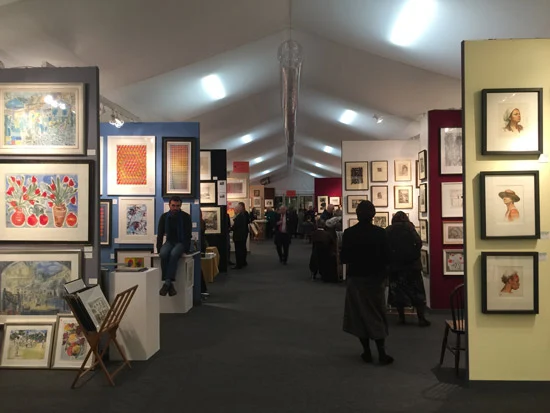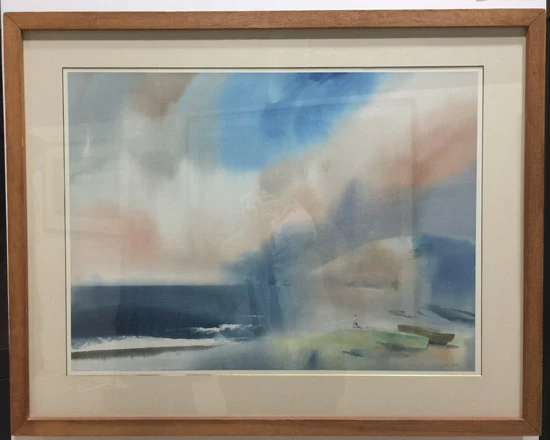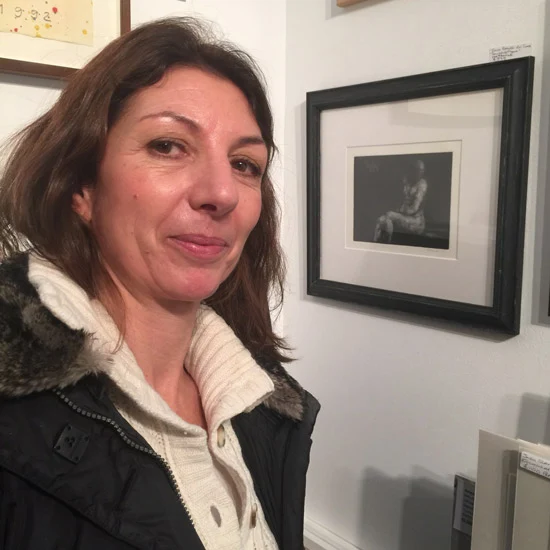You could win a £10,000 commission and £500 worth of art materials from Cass Art.
Landscape Artist of the Year 2017
We're coming up to two months left before the deadline for entries for this competition.
 |
Who can enter
The Competition is open to all artists – amateur, professional or hobbyists - but there are some restrictions.
This is NOT a competition where your partner, your best mate or Mum can enter you without you knowing! People can help you with the entry process but it must be YOUR ENTRY.
YOU can ONLY enter IF you:
- are aged 16 or over as at 29th November 2016
- are in good health
- hold a valid passport
- have been LEGALLY resident in the UK, Gibraltar, Isle of Man, Channel Islands and the Republic of Ireland for at least one year on 29th November 2016
- can provide documentation to support all of the above (ie. birth certificate; passport, any relevant documentation relating to your immigration/residency status).
- provide written agreement to you entering the competition
- written consent to you being filmed prior to filming.
- accompany you at all filming - or send a nominated adult.
If you are chosen as a Shortlisted Artist or a Reserve Shortlisted Artist, you must be available for filming between 1st June 2017 and 20th July 2017.
How to enter
The emphasis on YOU means that only YOU can enter unless you are under 18 in which case your parents need to complete and submit the entry. (You can help them!)
You've only got one chance with this competition. This is what you need to do:
- Read the terms and conditions (LOTS of small print). Then read them again. Then read them again before you upload your entry. I cannot emphasise too much how easy it is to miss or misunderstand an important point - and you'll be kicking yourself if you do!
- YOU need to complete/submit the online application form
- YOU need to upload digital images (low-resolution JPEGS, no less than 800KB and ideally no more than 1.0MB) of landscape paintings created by YOU. These are:
- A photograph of your landscape painting NOT including any frame. See further notes on what the landscape should and should not be
- A photograph of an additional landscape.
- An optional third photograph of a piece of your art. This does not have to be a landscape
- One passport-style photograph of yourself. (max size 500KB)
- You will also be asked to
- describe yourself as an artist and your background,
- detail whether you have entered or won any other art competitions - and how far you got.
- state details of any television programme you've been on before
- explain why you painted your landscape and how you painted it
Note you should NOT manipulate your images (using Photoshop or other digital image software) so they look better than they are.
Artists are selected to attend the heats based on the artwork submitted as part of the entry.
If you are shortlisted you are required to supply high-resolution quality images of your Landscape Entry for marketing and publicity purposes.
Sky Arts has some advice about how to photograph your art
Images of landscape paintings that are eligible for submission are defined as follows:
So bottom line that means you have to be able to get a minimum of two artworks plus all painting gear to a Heat which might be located anywhere in the country.
There are six heats in the first stage of the Competition which will take place intended to take place in three locations in 2017 across the UK and Ireland on the following dates at various location (to be decided):
Further conditions include:
The images of the Landscape Entry and the Additional Works of Art must not be manipulated in any way and must be of the work of art entered.
Eligible Landscape paintings - for submission
Artists are selected to attend the heats based on the artwork submitted as part of the entry.
If you are shortlisted you are required to supply high-resolution quality images of your Landscape Entry for marketing and publicity purposes.
Sky Arts has some advice about how to photograph your art
Images of landscape paintings that are eligible for submission are defined as follows:
- MUST be a painting of a landscape vista
- MUST each have a file size of at least 800KB and ideally no more than 1.5MB.
- Eligible media for the painting include any material EXCLUDING photography, video, sculpture and all forms of digital media.
- Collage and mixed media works are all allowed.
- The work may be abstract or expressive - however, it must be recognisable as a representation of a landscape
- Aall paintings should have been produced in the last five years.
- Maximum size is 1220 x 914 mm (48” x 36”).
- Additional Work(s) of Art submitted can be any size, and can also be in any material other than photography, video, sculpture or any form of digital media.
So bottom line that means you have to be able to get a minimum of two artworks plus all painting gear to a Heat which might be located anywhere in the country.
Heats / Filming open to the public
There are six heats in the first stage of the Competition which will take place intended to take place in three locations in 2017 across the UK and Ireland on the following dates at various location (to be decided):
- Heats One and Two: on Tuesday 13th and Wednesday 14th June 2017
- Heats Three and Four: on Tuesday 20th and Wednesday 21st June 2017
- Heats Five and Six: on Tuesday 27th and Wednesday 28th June 2017
Further conditions include:
- Each Heat Location/Date will have a Reserve List of standby artists who can take the place of a Shortlisted Artist who is no longer able to take part (eg forgot to bring their artwork with them!)
- You are required to bring your actual artworks submitted as part of your entry to the Heat
- You have to paint the Visa allocated - whether you like it or not! (Personally speaking, this is what would eliminate me - I can't abide people telling me which view to paint! I've also been filmed painting for television and I can tell you that it this condition is quite simply OTT. By all means, indicate an area in which artists have to sit or stand - but do NOT tell me which view I connect with. I can't produce a good artwork unless I find a view appealing!)
The Shortlisted Artists will have a maximum of 4 hours over a 6 hour period (or such other period as the Producer at its discretion may determine) to complete their Heat Artwork. Your painting is judged on the results produced at the end of heat, whether you think the artwork to be finished or not.The Semi Finalists will consist of the winners of each of the Heats and wil take place on Tuesday 18th July 2017
The Finalists will be asked to complete a further two landscape artworks
TIPS for potential applicants
DO NOT apply IF:
- you don't like having your photo taken - you'll freak when you see what you like through a camera lens
- you have never done any plein air painting. This is a landscape competition and it's not exciting watching people paint from photos or iPads - so you MUST be prepared to paint the landscape in front of you from observation.
- submit landscapes which you have painted plein air.
- explain clearly where the place was
- how you painted it - ideally while painting plein air.
Sky Arts Artist of the Year Competitions: Other Posts
Landscape Artist
- Sky Arts Landscape Artist of the Year 2016 - Heat Winners & Finalists
- Sky Arts Landscape Artist of the Year 2015 - Call for entries
Portrait Artist
- Sky Arts Portrait Artist of the Year 2018 - Call for Entries
- Sky Arts Portrait Artist of the Year 2014 - Call for Entries
You can read more about Art Competitions on my dedicated webpage on this blog Major UK Art Competitions 2017-18
































